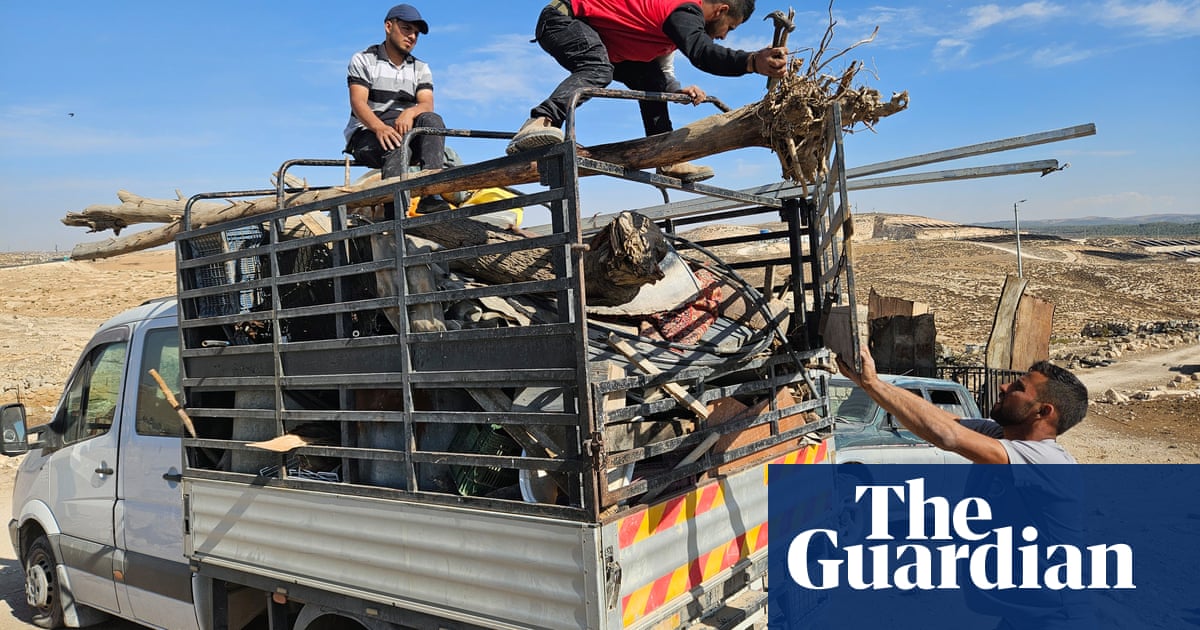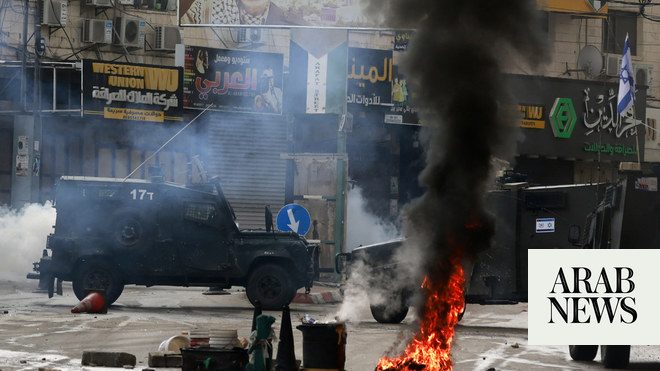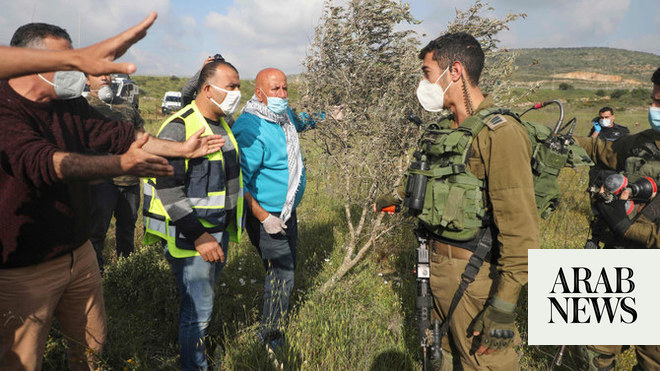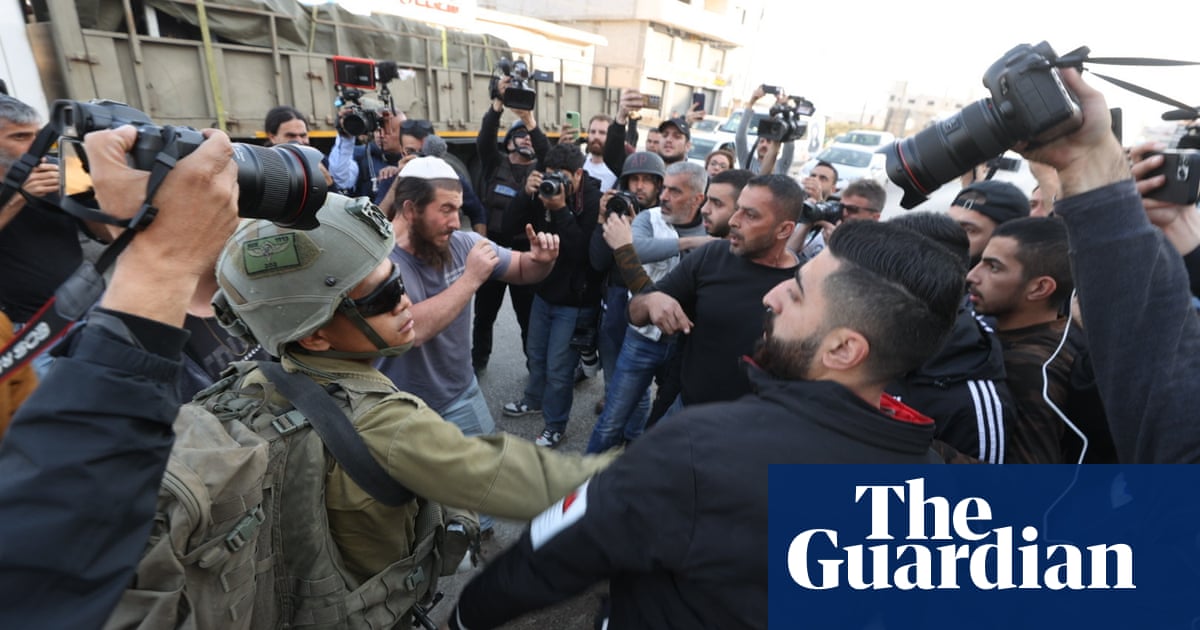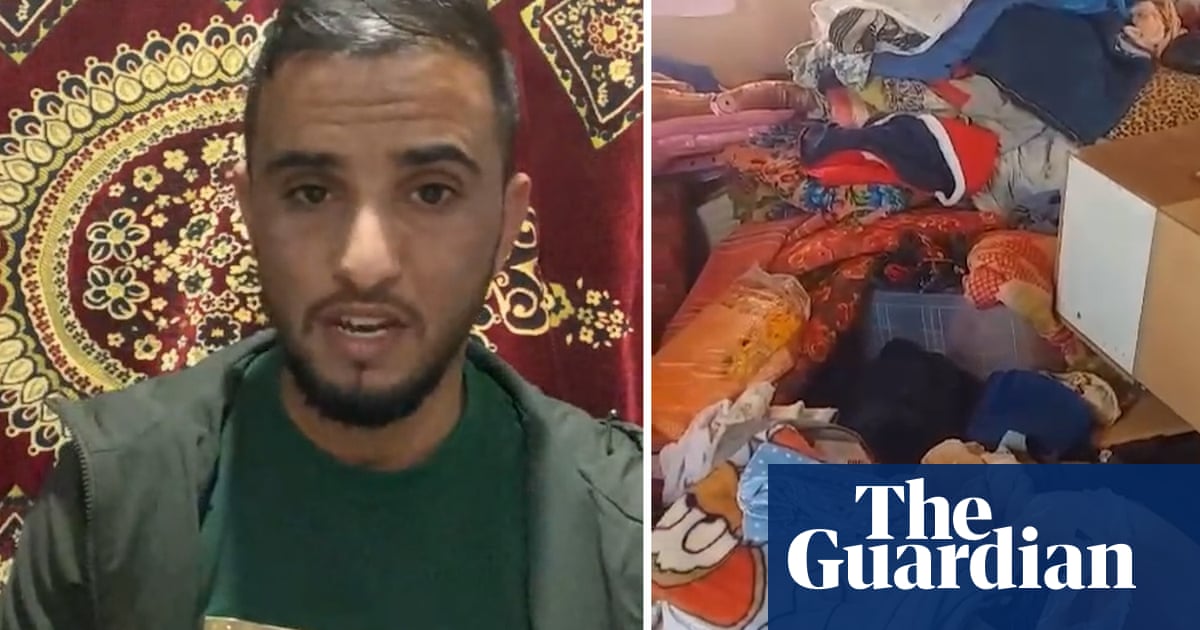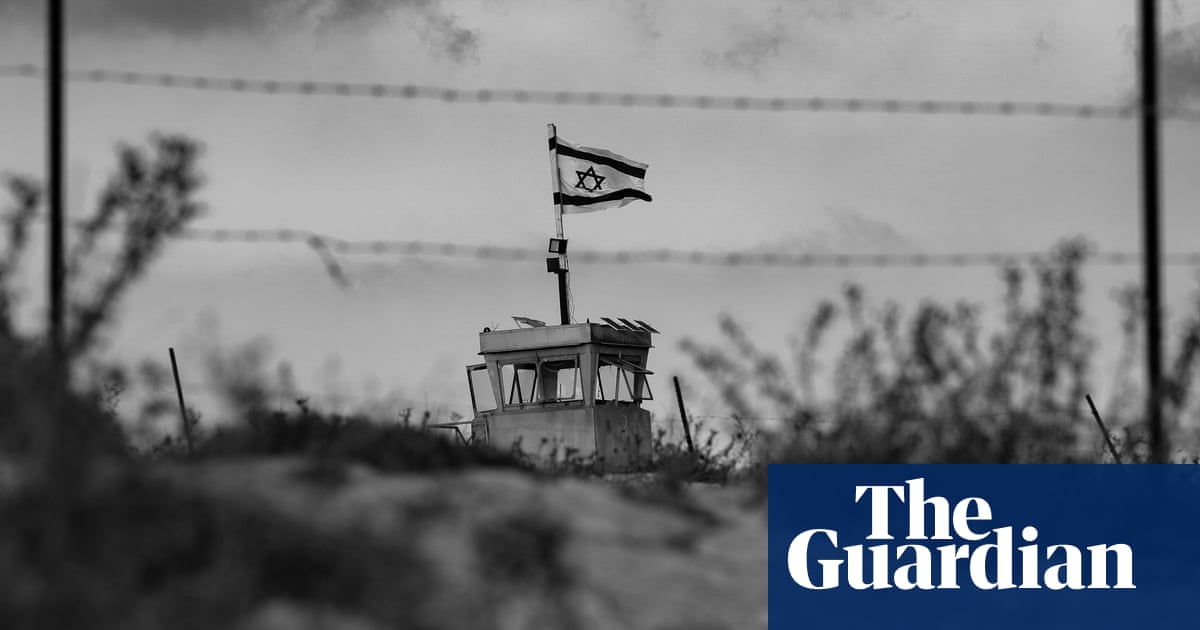
Violence in the occupied West Bank was already at a more than 15-year high in 2023, with 200 Palestinians and 26 Israelis killed, but since Hamas unleashed the deadliest day in Israel’s history on 7 October it has surged in parallel with the war in Gaza.
Since that date 260 Palestinians have been killed in the West Bank, including in raids by the Israeli military against suspected militants, and by extremist settlers – whose daily attacks against Palestinians have more than doubled in the last two months, UN data shows. The international community has issued strong statements to the Israeli government that it must protect Palestinians from attacks by extremist settlers.
Manel Shahada lives in the small village of Qusra, outside Ramallah in the West Bank. Settlements have surrounded her land over the decades and settlers recently attacked her home with her family inside. Shahada stares out the broken window where settlers shot through the glass. She and her three children have now abandoned the home after the attack.
For these photographs, I stayed with Palestinians families facing threats and abuse from settlers encroaching on their land and met Israeli activists attempting to help Palestinian families undergoing these rising threats. The following images show this rise of violence since 7 October and life for Palestinians in the West Bank amid expanding settlements.
Ibrahim with his wife and daughter drink tea on their land in south Hebron hills. The family has been displaced three times since 1948 by settlers.
Ibrahim lives with his wife, three children, and extended family – 15 people in total. Settlers have often tried to encroach on their land but, says Ibrahim, “it’s never been like this.” On 9 October he says armed settlers came to his property and shot live rounds near his feet, then struck him to the ground with their assault rifles. He says his back was injured badly and the settlers blocked access for an ambulance to his house. His family eventually carried him to the main road, where he was able to get a ride to the hospital.
Ibrahim shares a meal with a member of his family in the south Hebron hills.
Ibrahim’s wife prepares bread in the morning for the family.
Ibrahim’s wife prepares for the day in the early morning.
An army outpost can be seen from Ibrahim’s property. Directly behind Ibrahim’s home settlers have set up a compound.
Outside a residency in south Hebron hills, a community has collected all the percussion/teargas canisters from settlers and the army. The canisters are supplied from the US. An Israeli activist demonstrates the canisters used by both army and settlers.
An Israeli activist demonstrates the canisters used by both the army and settlers.
Manel Shahada poses for a portrait at her relative’s home in Qusra, where she and her children now live after being displaced by settlers and abandoning their home. In 2017 her husband was killed by a settler when farming on their land.
Shahada grabs the remaining things she needs from the home to move in with her extended family. When the settlers attacked her home, a group of 50 to 60 came, shot into her property, cut the power lines, and set their car on fire. Residents came to help the family; four members of the community were killed and 20 others wounded. At the funeral, two more people were killed when settlers ambushed the burial.
After the attack on Shahada’s home, the village was trying to transport the bodies for a funeral ceremony of the victims when the army said the main road was closed and instructed them to take an alternative route. When they arrived at this route, settlers ambushed the funeral convoy, killing two more people and wounding several others. Abed Alhkim poses for a portrait in his home with a poster on the wall of his brother Ibrahim and nephew Ahmed, who were killed in the funeral attack.
Halima and her husband, Ahmed, live in a small village in south Hebron hills, with their two daughters, Ahmed’s brother and his wife. The family have been displaced four times since the creation of the state of Israel in 1948 and now fear they will have to move once again. Halima takes the fresh bread she baked in the morning to prepare breakfast for the family.
Ahmed prays in the early morning after sleeping in the flat-bed trailer outside to protect his family.
Ahmed takes his sheep out for grazing in the early morning. Settlers have made his usual grazing grounds challenging, give him less and less land for his flock.
Halima and Ahmed share a breakfast with family members.
Since the recent threats against Ahmed and Halima’s home, Israeli activists have been providing a protective presence. There is less likelihood that settlers will be able to forcibly move Palestinian residents from their homes if the activists are present. The activist group has maintained a 24-hour presence, taking shifts throughout the day and night. An activist sits with the family at night at their property in the village of Susiya, in the south Hebron hills of the West Bank.
In the recent weeks the army declared two of their olive orchards as “closed military zones” and no harvesting is permitted on their own land. As I was visiting the family, the army received a message that someone had been picking olives, came to the property, and explained if they witnessed any harvesting, there would be arrests.




